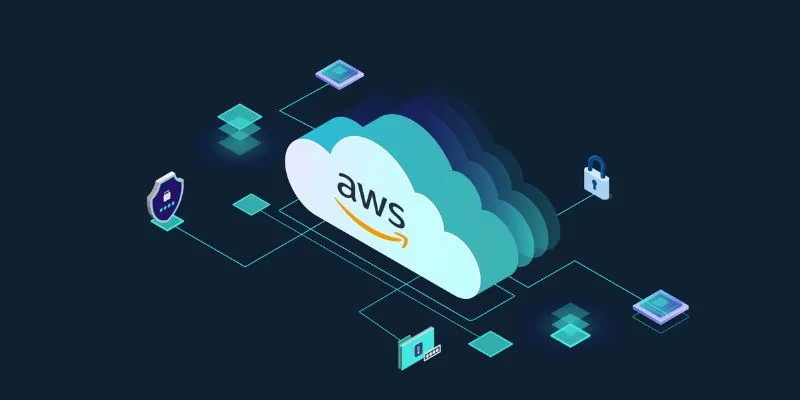
In today’s digital landscape, securing cloud environments is paramount to protecting sensitive data and maintaining compliance. Amazon Web Services (AWS) offers a comprehensive suite of tools and features to help organizations secure their cloud infrastructure. However, with great flexibility comes the responsibility of implementing robust security measures. In this blog, we’ll explore essential security best practices for AWS, providing a framework for safeguarding your cloud resources and ensuring a resilient and secure AWS environment. Unlock your AWS potential! Embark on a AWS journey with our AWS Classes in Chennai. Join now for hands-on learning and expert guidance at FITA Academy.
1. Implement Identity and Access Management (IAM) Best Practices
Identity and Access Management (IAM) is a fundamentals component of AWS security. Properly managing user access is crucial to protecting your AWS resources.
- Use IAM Roles and Policies: Instead of sharing AWS root credentials, create IAM users with specific roles and policies tailored to their job functions. Use least privilege principles to ensure users have only the permissions necessary to performs their tasks.
- Enable Multi-Factor Authentication (MFA): Enhance account security by enabling MFA for all IAM users, especially those with elevated permissions. MFA adds an extra layer of protection by requiring a second form of authentication in addition to the password.
- Regularly Review and Rotate Credentials: Periodically review IAM roles and policies to ensure they align with current requirements. Rotate access keys and passwords regularly to minimize the risk of credential compromise.
For those looking to deepen their expertise in managing AWS security and other cloud-related functionalities, AWS Training in Bangalore provides comprehensive insights into AWS Identity and Access Management (IAM) and other core AWS services. With hands-on training, you can master best practices for AWS governance, security configurations, and resource optimization.
2. Secure Your Network with AWS VPC
Amazon Virtual Private Cloud (VPC) which allows you to isolate your cloud resources and control network access.
- Configure VPC Security Groups and NACLs: Use security groups as virtual firewalls to control inbound and outbound traffic to your instances. Network Access Control Lists (NACLs) can be used to provide an additional layer of security at the subnet level. Define rules that restrict access to only necessary ports and IP addresses.
- Implement Private Subnets: Place sensitive resources, such as databases, in private subnets that do not have direct access to the internet. Use NAT gateways or instances to enable outbound internet access for resources in private subnets while maintaining security.
- Enable VPC Flow Logs: Monitor network traffic by enabling VPC Flow Logs. This feature which allows you to captures and analyze data about the traffic going to and from your VPC, helping you identify potential security issues.
3. Protect Data at Rest and in Transit
Ensuring data security involves protecting data both when it is stored and when it is transmitted.
- Use Encryption: AWS provides encryption options for data at rest and in transit. Enable server-side encryption for Amazon S3 buckets, Amazon EBS volumes, and Amazon RDS databases. For data in transit, use SSL/TLS encryption to secure communication between clients and servers.
- Manage Encryption Keys: Utilize AWS Key Management Service (KMS) or AWS CloudHSM to manage encryption keys securely. Regularly rotate keys and audit their usage to ensure compliance with security policies. Learn all the AWS techniques and become an AWS developer. Enroll in our AWS Online Course.
4. Monitor and Audit AWS Resources
Continuous monitoring and auditing are vital for maintaining a secure AWS environment.
- Enable AWS CloudTrail: CloudTrail provides visibility into API calls made on your AWS account. Enable CloudTrail to capture detailed logs of actions taken by users and services, which can help you detect unauthorized activity and conduct forensic analysis.
- Use AWS Config: AWS Config tracks changes to your AWS resources and evaluates them against compliance rules. Use AWS Config to monitor resource configurations and receive notifications about non-compliant changes.
- Implement Amazon GuardDuty: GuardDuty is a threat detection service that monitors your AWS environment for malicious activity. It provides alerts on potential security threats, such as unusual API calls or compromised instances.
5. Regularly Update and Patch Your Systems
Keeping your systems up to date is important for protecting against known vulnerabilities.
- Apply Security Patches: Regularly update your operating systems and applications to address security vulnerabilities. Utilize AWS Systems Manager Patch Manager to automate the patching process for Amazon EC2 instances.
- Monitor Security Bulletins: Stay informed about security advisories and updates from AWS and other relevant sources. Implement recommended patches and configurations to mitigate newly discovered threats.
Implementing security best practices on AWS requires a proactive and multi-faceted approach. By leveraging IAM best practices, securing your network with VPC configurations, protecting data at rest and in transit, monitoring and auditing resources, and keeping systems updated, you can build a robust security posture for your AWS environment. In a landscape where cybersecurity threats are ever-evolving, maintaining vigilance and continuously refining your security practices is essential for safeguarding your cloud infrastructure and ensuring long-term success. Explore the top-notch Best Software Training Institute in Chennai. Unlock coding excellence with expert guidance and hands-on learning experiences.
Read more: AWS Interview Questions and Answers
